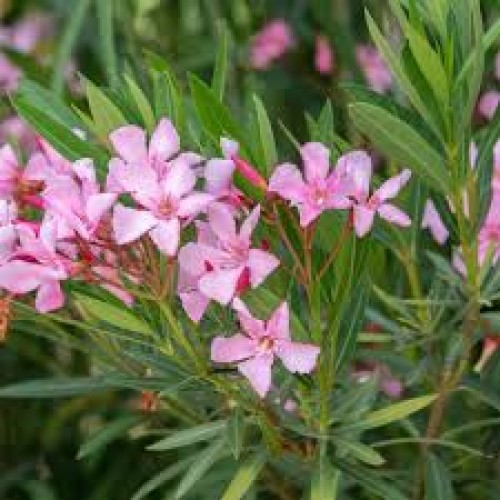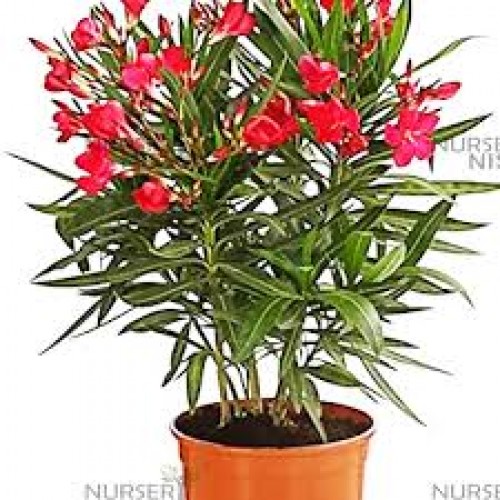60%
off
off
-
Sold
-

-

out
Kaner Plant (Nerium oleander)
Botanical Features & Nature
- Scientific Name: Nerium oleander
- Common Names: Kaner, Oleander, Karavira (Sanskrit)
- Family: Apocynaceae
- Origin: Native to the Mediterranean region; widely cultivated in tropical and subtropical areas
- Height: Typically grows between 6 to 20 feet (1.8 to 6 meters)
- Leaves: Long, narrow, leathery, dark green leaves arranged in pairs or whorls
- Flowers: Showy, fragrant blooms in shades of pink, white, red, and yellow; five-petaled and often clustered
- Fruit: Long, narrow follicles that split open to release numerous downy seeds
- Note: All parts of the plant are toxic if ingested; handle with care
Care & Cultivation
- Sunlight: Thrives in full sun; tolerates partial shade but may produce fewer flowers
- Soil: Prefers well-drained, fertile soils; adaptable to various soil types, including poor soils
- Watering: Drought-tolerant once established; regular watering during dry spells enhances blooming
- Fertilization: Apply balanced fertilizer during the growing season to promote healthy growth and flowering
- Pruning: Prune after flowering to maintain shape and remove dead or diseased branches
- Propagation: Easily propagated through stem cuttings; rooting hormone can enhance success
- Hardiness: Hardy in USDA zones 8-10; may require protection in colder climates
Uses & Benefits
Medicinal Applications
- Traditional Uses: Employed in traditional medicine for treating skin conditions, leprosy, and as a cardiac tonic
- Modern Research: Investigated for potential anti-cancer properties; however, due to its toxicity, medical use is limited and should be approached with caution
Environmental Significance
- Air Purification: Dense foliage aids in filtering pollutants, contributing to cleaner air
- Soil Stabilization: Extensive root system helps prevent soil erosion
- Wildlife Habitat: Provides shelter for birds and insects; however, toxicity limits its use in areas frequented by livestock
Ornamental & Cultural Importance
- Aesthetic Appeal: Valued for its vibrant flowers and evergreen foliage; commonly used in landscaping, parks, and as a hedge plant
- Cultural Significance: In various cultures, Kaner is associated with beauty and resilience; often featured in literature and art
Advantages of Planting Kaner
- Low Maintenance: Requires minimal care once established; drought and heat-tolerant
- Fast Growth: Rapidly establishes, providing quick coverage and greenery
- Versatility: Suitable for hedges, screens, and ornamental plantings
- Pest Resistance: Generally resistant to pests and diseases; however, watch for oleander caterpillars
- Deer Resistance: Unpalatable to deer due to its toxicity
Caution
- Toxicity: All parts of the Kaner plant are toxic if ingested; can cause serious health issues in humans and animals
- Handling: Wear gloves when pruning or handling the plant to avoid skin irritation from the sap
- Placement: Avoid planting in areas accessible to children and pets